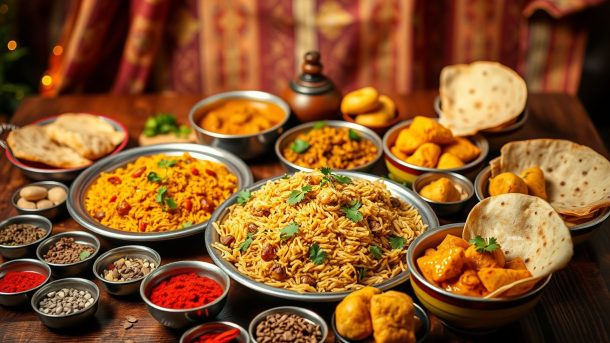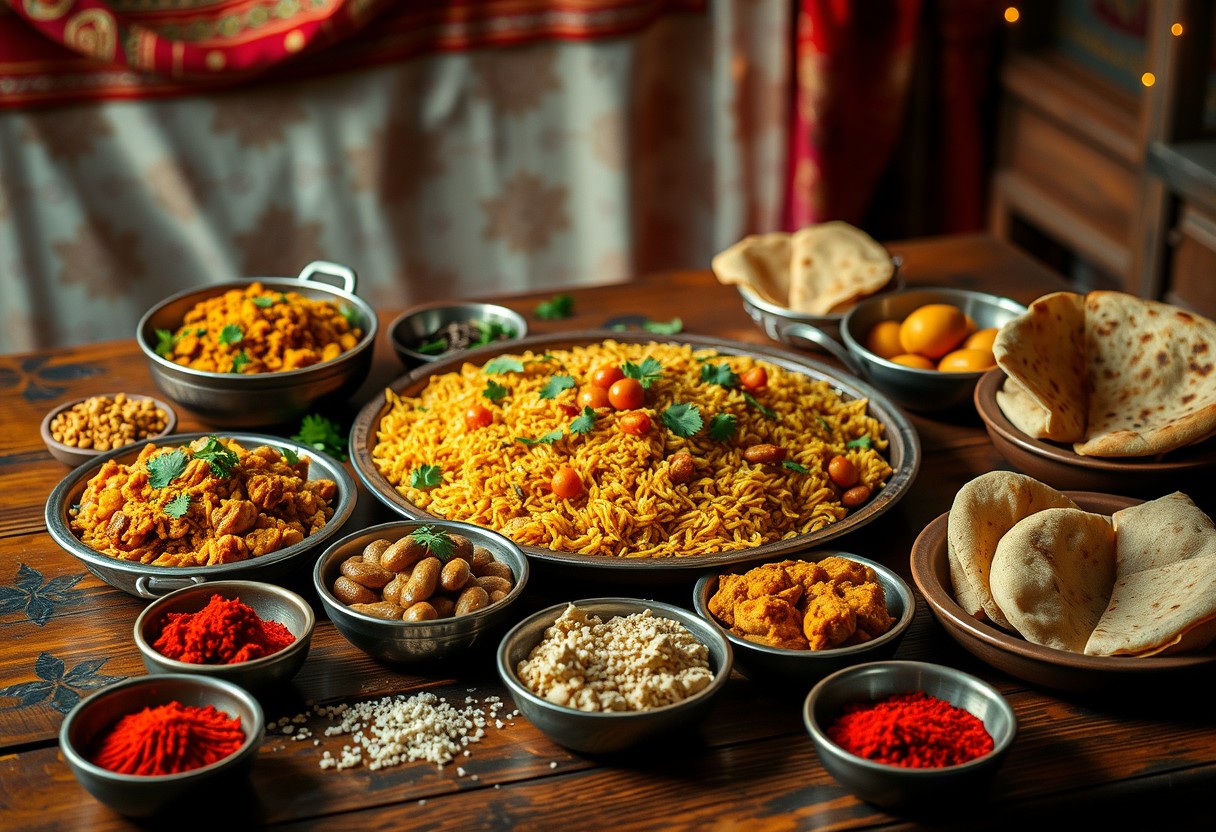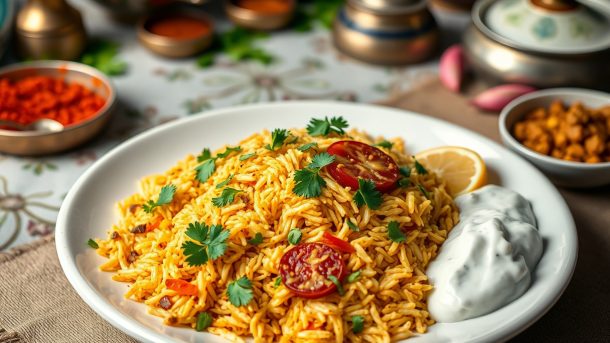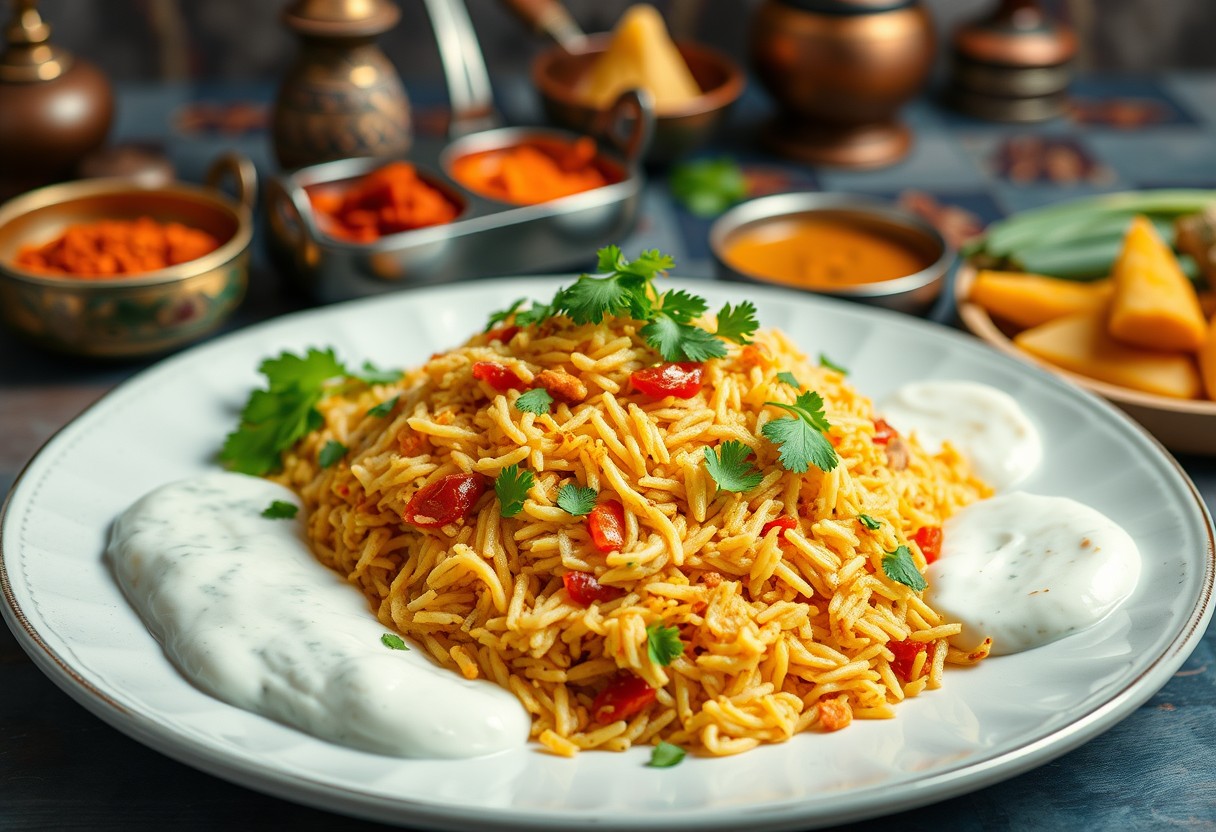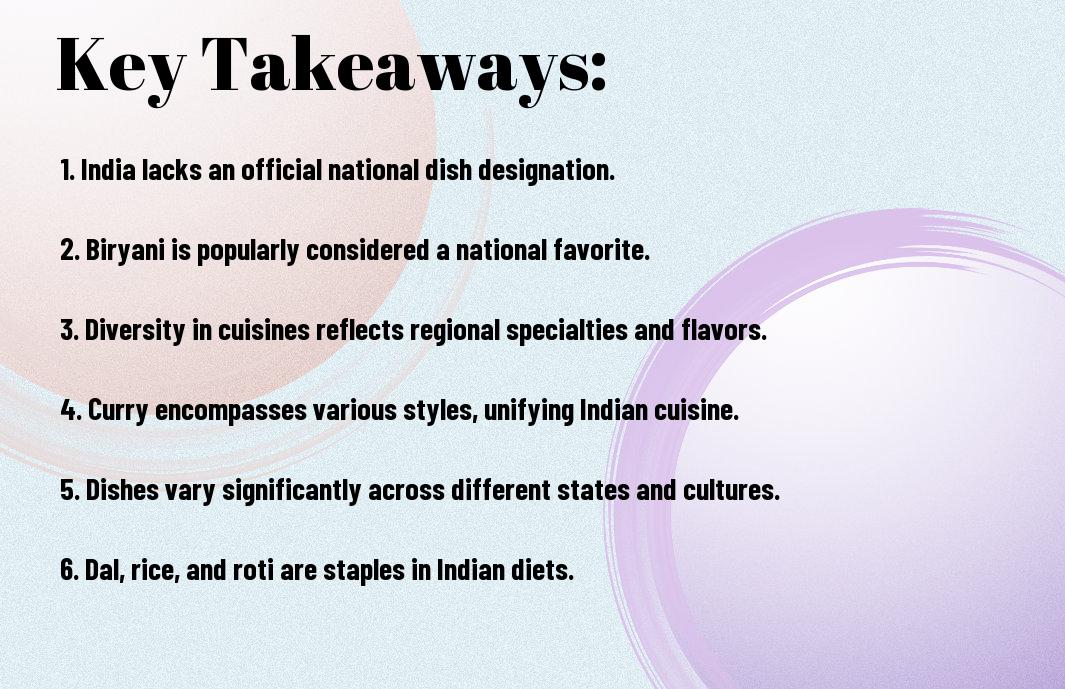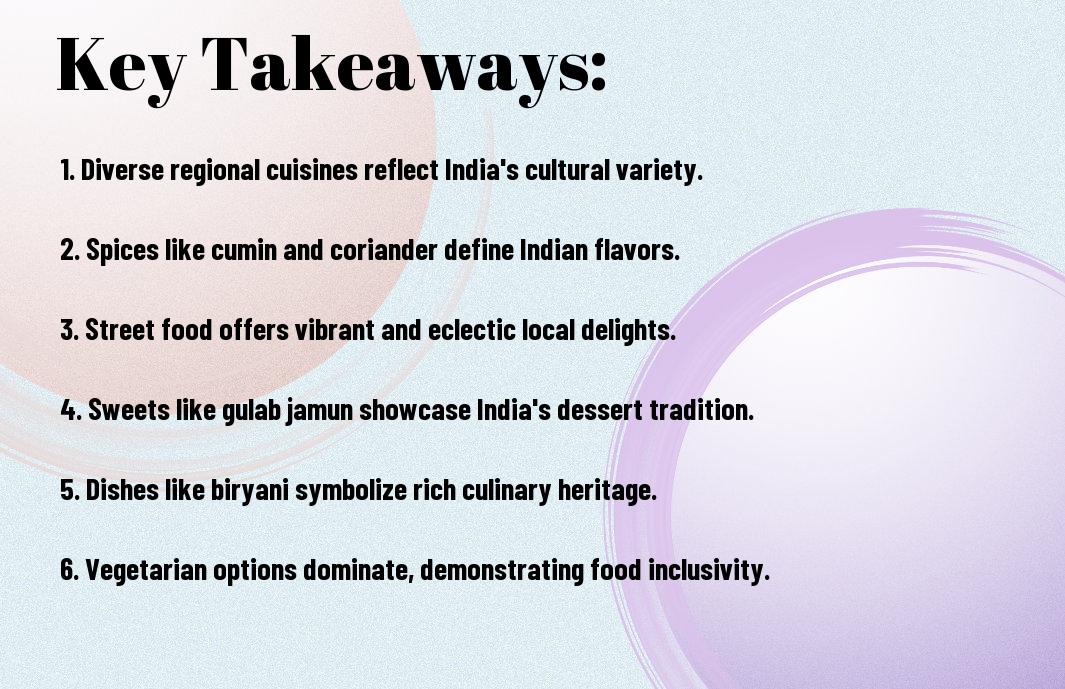It’s fascinating to discover the rich tapestry of India, a country renowned for its diverse culture, history, and traditions. As you explore, you’ll find that India is best known for its iconic landmarks, such as the Taj Mahal, its vibrant festivals, and its world-famous cuisine. Whether you’re intrigued by its ancient heritage, spiritual philosophies, or colorful textiles, this blog post will guide you through the many elements that make India a unique destination worth knowing about.
Key Takeaways:
- Diverse Culture: India is renowned for its rich and varied cultural heritage, encompassing many languages, religions, and customs.
- Historical Landmarks: The country is home to iconic monuments such as the Taj Mahal, representing its long-standing history and architectural prowess.
- Culinary Diversity: Indian cuisine is famous worldwide for its bold flavors and diverse regional dishes, making it a significant aspect of its cultural identity.

Cultural Heritage
To truly appreciate the rich tapestry of India, you must explore its cultural heritage, which is an intricate blend of traditions, art forms, and festivities that reflect its historical depth and diversity.
Traditional Arts and Crafts
Crafts in India represent the country’s age-old traditions and techniques, with each region showcasing its unique styles. From intricately woven textiles in Gujarat to beautifully crafted pottery in Rajasthan, you can find exemplary artisans preserving these skills that have been handed down through generations, highlighting India’s rich cultural narrative.
Festivals and Celebrations
Cultural celebrations are the heartbeat of Indian society, reflecting the country’s diversity and the unity in its multi-faceted traditions. You will find a plethora of festivals throughout the year, such as Diwali, Eid, Holi, and Christmas, each celebrated with fervor and joy, incorporating rituals, music, dance, and feasting that invite everyone to share in the spirit of togetherness.
Understanding these festivals allows you to tap into the essence of Indian culture, where each celebration tells a story that resonates with themes of love, community, and spirituality. You may discover how the vibrancy of colors, the aroma of traditional foods, and the sound of prayers merges seamlessly to create an atmosphere of joy and divinity.
Cuisine and Culinary Diversity
One cannot speak of India’s cultural heritage without acknowledging its extraordinary cuisine, characterized by its diverse flavors and ingredients. From the spicy curries of the south to the sweet delicacies of the north, each dish tells a different tale and connects you with regional practices and agricultural wealth.
Celebrations around food are an integral part of Indian culture, showcasing the myriad influences from various regions. You’ll find that every meal, whether it’s a local thali or a festive feast, comes with its unique blend of spices, making your culinary journey through India an exploration of not just taste but also history, tradition, and community bonding.
Natural Wonders
If you’re fascinated by nature, India’s natural wonders will leave you in awe. From majestic mountains to serene beaches, the country boasts a variety of landscapes that showcase its incredible beauty. You can explore everything from lush green forests to arid deserts. For more insights on this topic, visit What Is India Famous For? Top 25 Popular Places & Things.
Geographic Diversity
With its vast expanse, India features remarkable geographic diversity. You can experience the snow-capped peaks of the Himalayas, tropical beaches along the coast, and the fertile plains of the Ganges, all within the same country. Each region offers unique landscapes that attract travelers looking to immerse themselves in nature’s splendor.
Flora and Fauna
One of the most compelling aspects of India is its rich flora and fauna. The country’s diverse habitats, from rainforests to deserts, are home to an array of species, many of which are endemic. You can encounter stunning wildlife, including elephants, tigers, and various bird species, in national parks and wildlife sanctuaries.
To appreciate the full extent of India’s biodiversity, you should explore its numerous national parks and reserves. These protected areas allow you to witness animals in their natural habitats and experience the vibrant ecosystems that thrive across different regions. Whether you’re a wildlife enthusiast or simply enjoy observing nature, India’s flora and fauna will leave a lasting impression on you.
Historic Landmarks
All across India, historic landmarks tell stories of the nation’s rich heritage and cultural diversity. Exploring these sites provides you with a glimpse into the architectural brilliance and historical significance that define India’s past. From ancient forts to stunning temples, these landmarks reflect the nation’s evolution over the centuries.
Iconic Monuments
With their breathtaking architecture and historical importance, India’s iconic monuments serve as a testament to the country’s glorious past. The Taj Mahal, Hawa Mahal, and Qutub Minar not only represent India’s historical prowess but also draw millions of visitors eager to witness their grandeur firsthand.
UNESCO World Heritage Sites
Iconic around the globe, India boasts an impressive collection of UNESCO World Heritage Sites, showcasing its diverse history and culture. You can explore ancient ruins, majestic forts, and intricate temples that highlight the country’s architectural innovations and social narratives over time.
Historic cities like Jaipur, the ruins of Hampi, and the temples of Khajuraho stand among these treasured sites, offering visitors a fascinating glimpse into various eras of Indian civilization. Each UNESCO World Heritage Site adds to the tapestry of India’s rich historical narrative, allowing you to walk through history and appreciate the artistry that has shaped the nation.
Spiritual Significance
Not many countries can boast a spiritual landscape as rich and diverse as that of India. From ancient practices to contemporary explorations of consciousness, India remains a pivotal player in spirituality, attracting seekers from all over the globe.
Hinduism and Spiritual Practices
Any visitor to India will quickly learn about Hinduism, the predominant religion that shapes the cultural and spiritual identity of the nation. With its myriad deities, rituals, and philosophies, Hinduism offers a profound understanding of life and the universe, inviting you to investigate into spiritual practices that have been passed down through generations.
Yoga and Meditation
Meditation is deeply woven into the spiritual fabric of India, where practices like yoga originated thousands of years ago. You will discover that yoga is not merely a physical exercise; it encompasses a holistic approach to well-being, fostering a connection between your mind, body, and spirit.
To truly grasp the significance of yoga and meditation in India, you should immerse yourself in the teachings that emphasize self-awareness and inner peace. These practices allow you to explore your consciousness, providing tools to relieve stress and cultivate mindfulness in a chaotic world. You’ll find that attending yoga classes or meditation retreats can enhance your spiritual journey, guiding you toward a more harmonious existence.

To wrap up
Summing up, India is best known for its rich cultural heritage, diverse traditions, and vibrant festivals that captivate your senses. You’ll discover its world-renowned cuisine, ancient history, and stunning landscapes, from the Himalayas to beautiful beaches. The country’s contributions to art, philosophy, and spirituality further enhance its global significance. Furthermore, India’s technological advancements and economic growth positions it as a key player on the world stage. By exploring these facets, you gain a deeper appreciation for what makes India truly unique and extraordinary.
FAQ
Q: What is India best known for in terms of its cultural heritage?
A: India is renowned for its rich cultural heritage, which encompasses a wide array of languages, religions, festivals, and traditions. With over 1,600 spoken languages and numerous cultural practices across various states, India is a melting pot of diverse ethnic identities. Major festivals such as Diwali, Holi, Eid, and Christmas are celebrated with great fervor, reflecting the country’s pluralistic nature. The architecture, art forms, music, and dance are equally remarkable, showcasing a blend of ancient traditions and modern influences.
Q: How is India recognized for its cuisine?
A: Indian cuisine is celebrated globally for its diversity, flavors, and aromatic spices. Each region in India offers unique dishes influenced by local ingredients and cultural practices. From the spicy curries of the South to the rich Mughlai dishes of the North, and vegetarian delights in Gujarat to street food in Mumbai, Indian food presents an extraordinary array of tastes. Popular dishes like biryani, paneer tikka, butter chicken, and samosas have gained international fame, inviting food lovers from around the world to experience India’s culinary greatness.
Q: What contributions has India made to science and technology?
A: India has made significant contributions to science and technology throughout history, particularly in mathematics, astronomy, and medicine. Ancient Indian scholars developed the concept of zero, the decimal system, and made advancements in geometry. In modern times, India has achieved milestones in fields such as information technology, space exploration (notably with the Mars Orbiter Mission), and biotechnology. The country is also home to a robust IT industry, contributing immensely to global technological innovations.
Q: What role does India play in global cinema?
A: India is best known for its vibrant film industry, Bollywood, which produces the largest number of films in the world. Bollywood movies are characterized by their unique blend of dramatic storytelling, colorful song-and-dance sequences, and captivating narratives. Besides Bollywood, regional film industries like Tollywood (Telugu cinema), Kollywood (Tamil cinema), and others contribute to India’s cinematic diversity. Indian films have garnered international recognition, influencing filmmaking styles and reaching audiences worldwide through film festivals and streaming platforms.
Q: Why is India famous for its historical sites?
A: India is dotted with numerous historical sites that reflect its rich history and architectural brilliance. The Taj Mahal, a UNESCO World Heritage Site, is perhaps the most iconic symbol of India’s heritage, known for its breathtaking beauty and romantic backstory. Other notable sites include ancient forts, palaces, temples, and historical cities such as Jaipur, Varanasi, and Agra. India’s historical architecture showcases various styles, including Indo-Islamic, Mughal, and ancient temple architecture, making it a haven for history enthusiasts and tourists alike.





